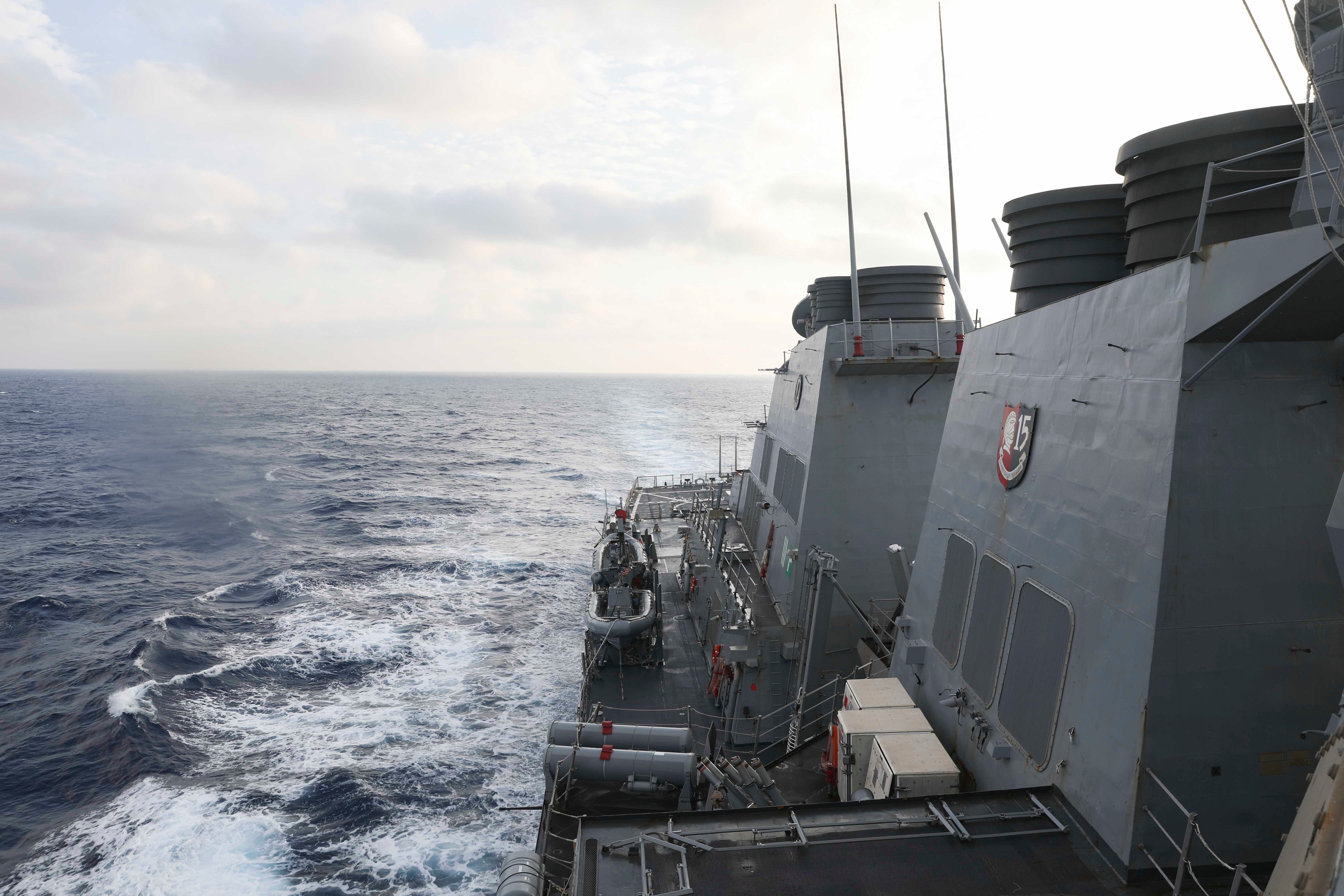China threatens consequences over US warship's actions
China is threatening “serious consequences” after the U.S. Navy sailed a destroyer around the disputed Paracel Islands in the South China Sea for the second day in a row, in a move Beijing claims was a violation of its sovereignty and security

Your support helps us to tell the story
From reproductive rights to climate change to Big Tech, The Independent is on the ground when the story is developing. Whether it's investigating the financials of Elon Musk's pro-Trump PAC or producing our latest documentary, 'The A Word', which shines a light on the American women fighting for reproductive rights, we know how important it is to parse out the facts from the messaging.
At such a critical moment in US history, we need reporters on the ground. Your donation allows us to keep sending journalists to speak to both sides of the story.
The Independent is trusted by Americans across the entire political spectrum. And unlike many other quality news outlets, we choose not to lock Americans out of our reporting and analysis with paywalls. We believe quality journalism should be available to everyone, paid for by those who can afford it.
Your support makes all the difference.China threatened “serious consequences” Friday after the U.S. Navy sailed a destroyer around the disputed Paracel Islands in the South China Sea for the second day in a row, in a move Beijing claimed was a violation of its sovereignty and security.
The warning comes amid growing tensions between China and the United States in the region, as Washington pushes back at Beijing's growingly assertive posture in the South China Sea, a strategic waterway it claims virtually in its entirety.
On Thursday, after the U.S. sailed the USS Milius guided-missile destroyer near the Paracel Islands, China said its navy and air force had forced the American vessel away, a claim the U.S. military denied.
The U.S. on Friday sailed the ship again in the vicinity of the islands, which are occupied by China but also claimed by Taiwan and Vietnam, as part of what it called a “freedom of navigation operation" challenging requirements from all three nations requiring either advance notification or permission before a military vessel sails by.
“Unlawful and sweeping maritime claims in the South China Sea pose a serious threat to the freedom of the seas, including the freedoms of navigation and overflight, free trade and unimpeded commerce, and freedom of economic opportunity for South China Sea littoral nations,” said U.S. 7th Fleet spokesman Lt. j.g. Luka Bakic in an emailed statement.
“The United States challenges excessive maritime claims around the world regardless of the identity of the claimant,” Bakic added.
China's Ministry of National Defense responded by accusing the U.S. of “undermining the peace and stability of the South China Sea” with its actions.
“The act of the U.S. military seriously violated China’s sovereignty and security, severely breached international laws, and is more ironclad evidence of the U.S. pursuing navigation hegemony and militarizing the South China Sea,” ministry spokesman Tan Kefei said. “We solemnly request that the US. immediately stop such actions of provocation, otherwise it will bear the serious consequences of unexpected incidents caused by this.”
He said China would take “all necessary measures” to ensure its security but did not elaborate.
Like its statement on the Thursday incident, China again said it drove the American ship away from the islands, which are in the South China Sea a few hundred kilometers (miles) off the coast of Vietnam and the Chinese province of Hainan.
Both sides said their actions were justified under international law.
Bakic told The Associated Press that the ship “was not driven away” and “continued on to conduct routine maritime security operations in international waters” after concluding its mission near the Paracel Islands.
“The operation reflects our commitment to uphold freedom of navigation and lawful uses of the sea for all nations,” he said. "The United States will continue to fly, sail, and operate wherever international law allows, as Milius did today.”
The U.S. has no South China Sea claims itself, but has deployed Naval and Air Force assets for decades to patrol the strategic waterway, through which around $5 trillion in global trade transits each year and which holds highly valuable fish stocks and undersea mineral resources.
A United Nations-backed arbitration tribunal ruled in 2016 that the historical claim from China on the waters had no legal basis under the 1982 U.N. Convention on the Law of the Seas, and Washington maintains that freedom of navigation and overflight of the waterway are in the American national interest.
U.S. forces currently operate in the South China Sea daily, and have been present for more than a century. China regularly responds angrily, accusing the U.S. of meddling in Asian affairs and impinging upon its sovereignty.
China's claims have frequently brought it into conflict with other nations in the region as well, and Filipino diplomats were expected to unleash a slew of protests on Friday over China's recent targeting of a Philippine coast guard ship with a powerful military laser and other aggressive behavior.